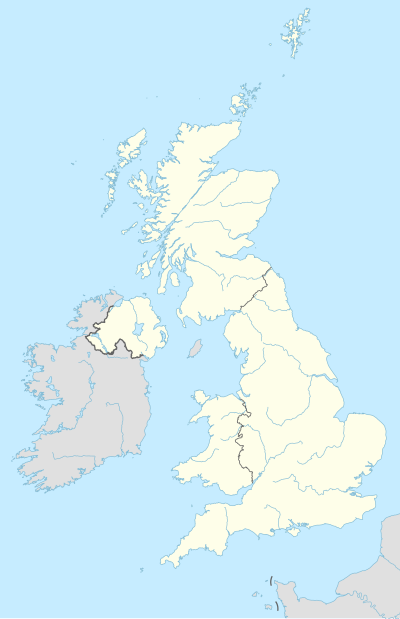
Royal Air Force Kenley, more commonly known as RAF Kenley is a former airfield station of the Royal Flying Corps in the First World War and the RAF in the Second World War. It played a significant role during the Battle of Britain as one of the three RAF stations specifically tasked with the defence of London. It is located near Kenley on the edge of Greater London. The site remains in use with the Ministry of Defence, as Kenley Airfield.

Royal Air Force Cranwell or more simply RAF Cranwell is a Royal Air Force station in Lincolnshire, England, close to the village of Cranwell, near Sleaford. Among other functions, it is home to the Royal Air Force College (RAFC), which trains the RAF's new officers and aircrew. The motto, Altium Altrix, meaning "Nurture the highest" appears above the main doors of the Officers Mess. Since January 2023, RAF Cranwell has been commanded by Group Captain Tina Jessup.

Royal Air Force Barkston Heath or RAF Barkston Heath is a Royal Air Force Relief Landing Ground under the command of RAF Cranwell near Grantham, Lincolnshire, England.

Royal Air Force Chivenor, or more simply RAF Chivenor, was a Royal Air Force station located on the northern shore of the River Taw estuary, on the north coast of Devon, England. The nearest towns are Barnstaple and Braunton.
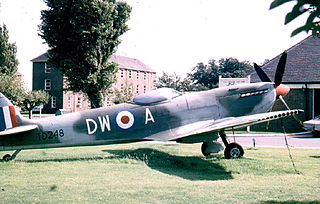
MoD Sealand, is a Ministry of Defence installation in Flintshire, in the northeast corner of Wales, close to the border with England. It is a former Royal Air Force station, active between 1916 and 2006.

Royal Air Force Syerston, commonly known simply as RAF Syerston, is a Royal Air Force station in the parish of Flintham, near Newark, Nottinghamshire, England. Opened in 1940, it was used by the Royal Air Force (RAF) as a bomber base during the Second World War, operating Vickers Wellingtons, Avro Manchesters, and the Avro Lancaster heavy bombers. Post-war, it became home to Jet Provosts of the 2 Flying Training School. It is now home to the Royal Air Force Central Gliding School.

Royal Air Force Topcliffe or RAF Topcliffe is a Royal Air Force station in North Yorkshire, England.
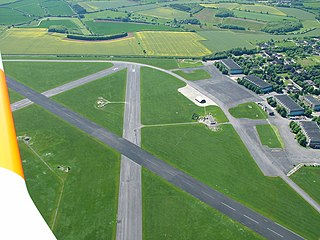
Royal Air Force Little Rissington or more simply RAF Little Rissington is an Royal Air Force satellite station in Gloucestershire, England. It was once home to the Central Flying School, the Vintage Pair and the Red Arrows.

A Volunteer Gliding Squadron (VGS) is an aircraft squadron of the Royal Air Force (RAF) which provides flying training in glider aircraft for Royal Air Force Air Cadets. All current operational Volunteer Gliding Squadrons operate a sole type of aircraft, the Grob G103A Twin II Acro, a conventional winch-launched tandem-seat sailplane known by its British military designation, Viking T1.

The Grob G109 is a light aircraft developed by Grob Aircraft AG of Mindelheim Mattsies in Germany. It first flew in 1980. The G109B followed in 1984. It is a two-seat self-launching motor glider in which the pilot and passenger or student sit side by side, with good visibility provided by large windows.

Royal Air Force Hullavington, or more simply RAF Hullavington, was a Royal Air Force station located at Hullavington, near Chippenham, Wiltshire, England. The station opened in June 1937 and was primarily used for training. It closed on 31 March 1992 when it was transferred to the British Army and renamed Buckley Barracks. The airfield part of the site, known as Hullavington Airfield, continued to be used for RAF gliding operations until 2016 when it was sold to technology company Dyson.
Royal Air Force Greatham or more simply RAF Greatham is a former Royal Air Force satellite station located in Greatham, County Durham, England.
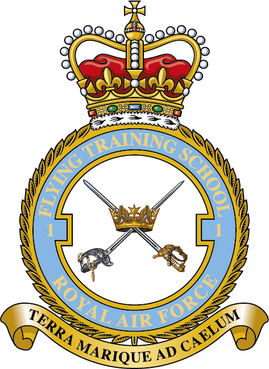
The No. 1 Flying Training School is the oldest military pilot training school in the world, currently used to deliver rotary training to aircrew of the British armed forces.

703 Naval Air Squadron of the Fleet Air Arm of the Royal Navy was formed as a long-range catapult squadron on 3 March 1942 at RNAS Lee-on-Solent. During the Cold War, it was reformed as an experimental trials unit, and then as a helicopter training squadron. Since 2003, the squadron has formed the Royal Naval wing of the Defence Elementary Flying Training School at RAF Barkston Heath.
No. 6 Flying Training School RAF is a Flying Training School (FTS) within No. 22 (Training) Group of the Royal Air Force that delivers flying training to University Air Squadrons and Air Experience Flights.
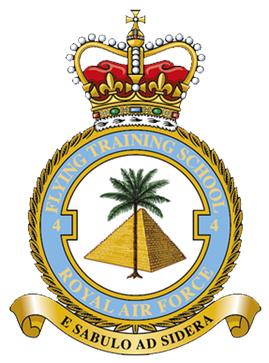
No. 4 Flying Training School is a Royal Air Force military flying training school, which manages Advanced Fast Jet Training (AFJT) from its base at RAF Valley in Anglesey, Wales. Its role is to provide fast jet aircrew to the Operational Conversion Units for the RAF's jet attack aircraft, the Eurofighter Typhoon and the Lockheed Martin F-35 Lightning II.
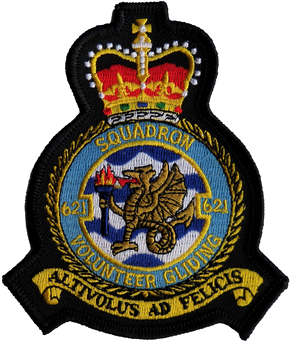
621 VGS is a Volunteer Gliding Squadron based at RAF Little Rissington in Gloucestershire, United Kingdom. 621 VGS is one of 10 remaining Volunteer Gliding Squadrons and operates under No.2 Flying Training School, within No.22 (Training) Group of the Royal Air Force Air Command.

The Central Gliding School (CGS) is the Royal Air Force's primary institution for the training of gliding instructors for the instruction of Royal Air Force and Air Cadet personnel. It is administered under No. 2 Flying Training School and is responsible for the standardisation of the Air Cadet gliding syllabus and its instructors.
This is the structure of the Royal Air Force, as of October 2020.


